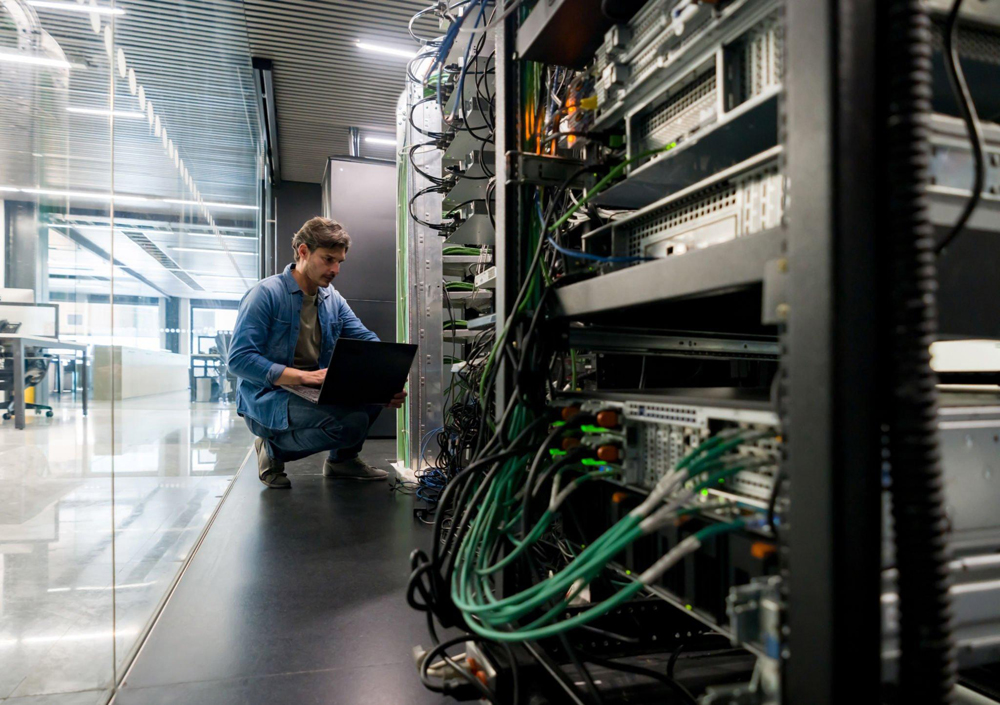Robots have been a staple of science fiction for decades, but they are no longer just the stuff of dreams. We now have self-driving cars, military robot dogs, and even robots that can hack into computer systems.
As human intelligence continues to evolve and innovate, so does the technology we use to navigate and understand our environment. In recent years, tech companies have been developing autonomous hacking robots capable of performing sophisticated cyber attacks without human intervention. These intelligent machines leverage artificial intelligence (AI) algorithms to learn how to penetrate and exploit security vulnerabilities in computer systems. They can then use this knowledge to launch devastating attacks against unsuspecting targets.

Table of Contents
Definition and History of Autonomous Hacking Robots
The concept of autonomous hacking robots has existed for some time, but they have only recently become a viable alternative to traditional cybersecurity methods. Autonomous hacking robots are computer programs that use artificial intelligence (AI) and machine learning (ML) algorithms to detect and respond to cyber threats. These robots can be programmed to scan networks autonomously, identify potential vulnerabilities, and respond quickly and accurately when they detect malicious activity. These machines’ development has revolutionized cybersecurity, offering unprecedented speed and accuracy in detecting and responding to cyber threats.
From autonomous drones to robotic arms capable of breaking into secure systems, these machines are revolutionizing the field of cybersecurity. As the sophistication of these robots continues to grow, so will their ability to protect our digital world from malicious actors.

Types of Autonomous Hacking Robots
Autonomous hacking robots come in many shapes and sizes, each designed for a specific task or purpose. The most common type is the network-scanning robot, which scans networks for potential vulnerabilities and can be programmed to take action when malicious activity is detected. Other autonomous hacking robots include:
- Open-source bots are designed to work with open-source software such as Linux.
- AI-powered chatbots that use natural language processing to interact with users.
- Deep learning-based systems that can detect patterns in data.
Autonomous robots also have applications in malware detection, web application security testing, and data analysis. As these robots become more advanced, they will continue to revolutionize the field of cybersecurity – providing unprecedented speed and accuracy in detecting and responding to cyber threats.
Benefits and Challenges Associated with Autonomous Hacking Robots
Like any new technology, several challenges are associated with deploying these robots safely in an enterprise environment. The major benefits include quicker identification of security vulnerabilities, faster response times, fewer false positives, and improved productivity. However, organizations must consider the potential risks of autonomous robots, such as privacy issues or accidental harm to systems or data. Organizations should ensure that their robots are properly configured and monitored for suspicious activity to mitigate these risks. Security teams should also train employees to recognize malicious behavior from automated bots and respond accordingly. With proper implementation and training, autonomous hacking robots can be a powerful tool for improving cybersecurity defenses.

Disadvantages of Using Autonomous Hacking Robots
Despite the numerous advantages of using autonomous hacking robots, there are also some potential downsides. For example, due to their automated nature, these bots can be susceptible to errors that may have serious consequences. If the bot is not correctly programmed or fails to detect an attack, it can lead to a false sense of security. Additionally, automation can also lead to vulnerabilities by introducing new types of threats that traditional methods may not be able to detect. Finally, there is always a risk of malicious actors taking advantage of these bots if they are not properly secured.
The potential risk posed by malicious actors taking advantage of autonomous hacking robots is a real concern. Autonomous robots are becoming increasingly popular in cyber security as they can quickly detect and potentially exploit vulnerable systems. In some cases, these evil robots can be left unattended or remotely controlled, providing an ideal opportunity for malicious actors to take advantage of them.
To mitigate this risk, organizations should ensure that all autonomous hacking robots are properly secured, with access limited to authorized personnel. Additionally, organizations should conduct regular audits and security testing of these robots to detect malicious activity. Finally, organizations should consider implementing a system of checks and balances to detect and respond quickly to any potential security threats their autonomous hacking robots pose.
Ethical Considerations for Using Autonomous Hacking Robots
The use of autonomous hacking robots raises many ethical considerations that should be considered. For example, these robots can be programmed to autonomously scan networks and systems to detect and respond to attacks. However, there is the potential for these scans to disrupt legitimate users’ activities unintentionally. Furthermore, the automation of these robots may lead to unintended consequences such as false-positive detections or malicious actors taking advantage of any weaknesses in their programming. Lastly, there is also the potential for these robots to be used for unethical purposes such as surveillance or censorship.

Current Uses and Trends for Autonomous Hacking Robot Technology
Autonomous hacking robots are rapidly becoming an important part of the fight against cybercrime. These robots are used to autonomously detect and respond to threats, monitor networks and systems for malicious activity, and provide real-time analysis of cyberattacks. They can also be programmed to scan for software and hardware vulnerabilities or launch attacks on a targeted system. With their ability to operate continuously with minimal user intervention, autonomous hacking robots offer tremendous potential for improving cybersecurity capabilities.
Wrapping Up
As technology evolves, robotic hackers quickly become vital to our digital security landscape. Robotics has the potential to detect and respond to threats with greater accuracy and speed than humans, as well as provide detailed analyses of cyberattacks that humans cannot match. While still in its infancy, it’s clear that robotic hackers could soon become commonplace in organizations worldwide. This technology could create a new era of automated software testing and ethical hacking exercises, providing an invaluable service for preventing malicious online activity. With the right development and investment, autonomous hacker technology could revolutionize cybersecurity and help keep us safe, with the possibility of minor hiccups.


Recent Comments